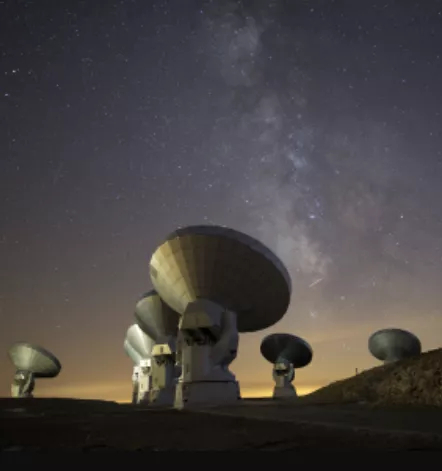A new molecule detected in a proto-planetary disk
Understanding the composition of proto-planetary disks, which systematically accompany the formation of stars and are the cradles of planetary systems, remains a key step to elucidate the mechanisms of planet formation.
The observation of molecules is the main way to constrain the physical mechanisms at work in these disks. But for that, it is also necessary to understand the chemical evolution of these same molecules to correctly interpret the molecular observations in the disks.
Among the molecules known to date, those containing sulfur remain poorly understood. CS (carbon monosulfide) was among the first molecules detected in the disks in 1997 (using the 30-m telescope of IRAM). The situation has changed only recently, with the discovery of H2CS by ALMA, and that of H2S (a key molecule for sulfur) by NOEMA.
An international team composed of European and Asian researchers used IRAM’s NOEMA interferometer, and in particular its ability to observe many molecular lines at the same time thanks to PolyFix, to detect the CCS molecule in the disk surrounding the triple GG star Tau. This disk is quite massive, which facilitates the detection of low abundance molecules, such as H2S, detected in 2018 by the same team.

The abundance of CCS is about 20 times lower than that of CS. The detection of this molecule, as well as a limit on the abundance of OCS, reinforces the problem of understanding sulfur chemistry in the disks. To date, no chemical model is yet able to correctly predict the abundances of well-detected sulfur molecules (CS, H2S, H2CS and CCS) or those with more noisy detections (SO and OCS). The detection of this new molecule is a further step towards a more coherent chemical model, opening little by little the way to the understanding of the physico-chemistry of the plane of the disk where planets are born.
Further Resources
- Scientific article : An unbiased NOEMA 2.6 to 4 mm survey of the GG Tau ring: First detection of CCS in a protoplanetary disk – Astronomy & Astrophysics, by N. T. Phuong, A. Dutrey, E. Chapillon, S. Guilloteau, J. Bary, T. L. Beck, A. Coutens, O. Denis-Alpizar, E. Di Folco, P. N. Diep, L. Majumdar, J.-P. Melisse, C.-W. Lee, V. Pietu, T. Stoecklin and Y.-W. Tang, https://doi.org/10.1051/0004-6361/202141881
IRAP Contact
- Audrey Coutens, audrey.coutens@irap.omp.eu






